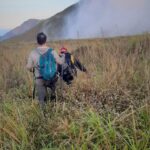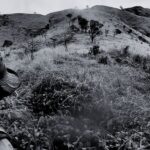Disclaimer: This article is intended to provide general information and guidance on wilderness first aid. It is not a substitute for expert medical advice. If you or someone else is injured or ill in the wilderness, you should seek professional medical help as soon as possible. Do not rely on this article to diagnose, treat, or prevent any medical condition. The author and publisher of this article are not responsible for any harm or damage that may result from following the instructions or suggestions in this article.
FIRST AID IN PHILIPPINE WILDERNESS
Exploring the Philippine wilderness is exciting, but you may also face many dangers such as rough terrain, vegetation, weather, and accidents. That’s why you need to learn Wilderness First Aid. This skill is essential for wilderness adventurers, especially when help is far away. It can help you avoid more damage and save lives in isolated places.
The Philippine Red Cross offers practical First Aid courses for emergencies in remote areas. For those unable to attend in-person training, there are various online resources available that offer information on first aid, including instructional videos, tutorials, and forums where individuals can exchange knowledge and experiences.
COMMON INJURIES AND ILLNESSES
Before building a first aid kit for your wilderness adventures, it's important to research and understand the most common injuries and illnesses that you might encounter. This way, you can pack a kit that is tailored to your specific needs, avoiding an overkill of unnecessary supplies and saving valuable space in your pack. Here are some of the common injuries and illnesses in the Philippine wilderness.

1. Sprains And Fractures
These injuries can be caused by accidents such as slips, trips or falls on uneven terrain or slippery trail, which are common in the mountainous areas of the country.
2. Cuts And Wounds
Scratches, cuts, punctures and wounds are common injuries that can occur especially in areas with sharp rocks or vegetation.
3. Allergies
Allergies caused by insect bites and plants in the wilderness can range from mild itching and swelling to life-threatening anaphylactic reactions. It's important to be aware of potential allergens and carry appropriate medication.
4. Dehydration
Outdoor activities can cause individuals to sweat and lose fluids, leading to dehydration. The hot and humid climate in the Philippines can exacerbate this condition which may lead to heat stroke, a life-threatening condition..

Dehydration may lead to heat exhaustion or heat stroke. Learn more about heat exhaustion and how to prevent it.
5. Uncontrollable Shivering
Shivering can happen when an individual is exposed to cold and wet conditions without adequate protection or when they keep on wearing wet clothing for a prolonged period. Uncontrollable shivering may lead to hypothermia, a life-threatening condition.

Uncontrollable shivering is one of the obvious early sign of hypothermia - a life-threatening condition. Know how to prevent hypothermia
Without the knowledge and tools to treat these common injuries and illnesses properly, they can get worse and lead to discomfort, infection, bleeding, shock, or even death.
THE USUAL FIRST AID KIT
Having knowledge of common injuries and illnesses that you can realistically manage in the wilderness, allows you to create a comprehensive first aid kit. It ensures that you're well-prepared to handle potential injuries or illnesses in the wilderness. Here are some basic things to add to your kit that can come in handy in sticky situations, or until professional help arrives.

- Elastic bandage is used to provide support and compression to injured limbs, reduce swelling, and secure dressings in place.
- Wound dressing is used to protect and cover wounds, control bleeding, and promote healing by keeping the wound clean and moist.
- Antibacterial solution is used to clean and disinfect wounds, prevent infection, and promote healing.
- Mini scissors is used to cut bandages, clothing, and other materials obstructing the injury.
- Mini tweezer is used to remove splinters, dirt, and other small objects from a wound.
- Alcohol is used as an antiseptic to clean wounds and disinfect equipment in first aid.
- Pain reliever, such as ibuprofen, is used to alleviate pain and discomfort caused by injuries or medical conditions.
- Antihistamine is used to treat allergic reactions, such as itching, hives, and swelling.
- Anti-inflammatory is used to reduce swelling, pain, and redness in first aid situations such as sprains, strains, and minor injuries.
While it's important to be prepared for emergencies when venturing into the wilderness, carrying a full-fledged first aid kit with all possible medical items in it, can be impractical and unrealistic. Hikers and campers often have limited space and weight capacity, making it necessary to prioritize essential items such as food, water, and shelter.
Sometimes, we have to improvise...
IMPROVISED FIRST AID TOOLS
No matter how comprehensive your first aid kit may be, there will inevitably be some essential item that it lacks. Improvisation can involve using unconventional or non-medical items to create makeshift tools and devices to aid in treating injuries or performing life-saving techniques. Some possible improvised first aid tools are:
- A splint made from wooden sticks, trekking poles or other rigid objects wrapped with cloth or tape to immobilize the injured limb.
- A bandage made from duct tape.
- A dressing made from clean cloth
- A tourniquet made from belt, scarf or shoelace.
- A sling made from shirt or towel.
- A multi-tool, such as a Swiss Army knife, may be used as a substitute for knife, scissors and tweezers.
WILDERNESS FIRST AID TUTORIAL
These are just some of the Wilderness First Aid videos you can watch to learn the basics of managing injuries and illnesses in the wilderness.
SNAKEBITES ARE RARE
The tropical wilderness may have a lot of snakes, but they rarely cross paths with humans. They prefer to stay away from us. However, sometimes you might step on a snake by accident, especially when you venture off-trail. It will feel threatened and might bite you to defend itself. If that happens, don’t panic. Click the button below to learn what to do next.

SNAKEBITES
Chances are, you won’t see any. But if you do step on one and get bitten, here’s what to do.
Remember, even the most experienced outdoor enthusiasts can fall victim to a freak accident. So, whether you're an expert hiker or a first-time camper, be sure to pack your first aid kit and learn how to use it beforehand. You never know when you might need to MacGyver your way out of a sticky situation.

CALL FOR HELP
When the situation becomes too tough to manage.









1 comment
Pingback: 12 Things Not To Pack In The Wilderness – peaksify.com